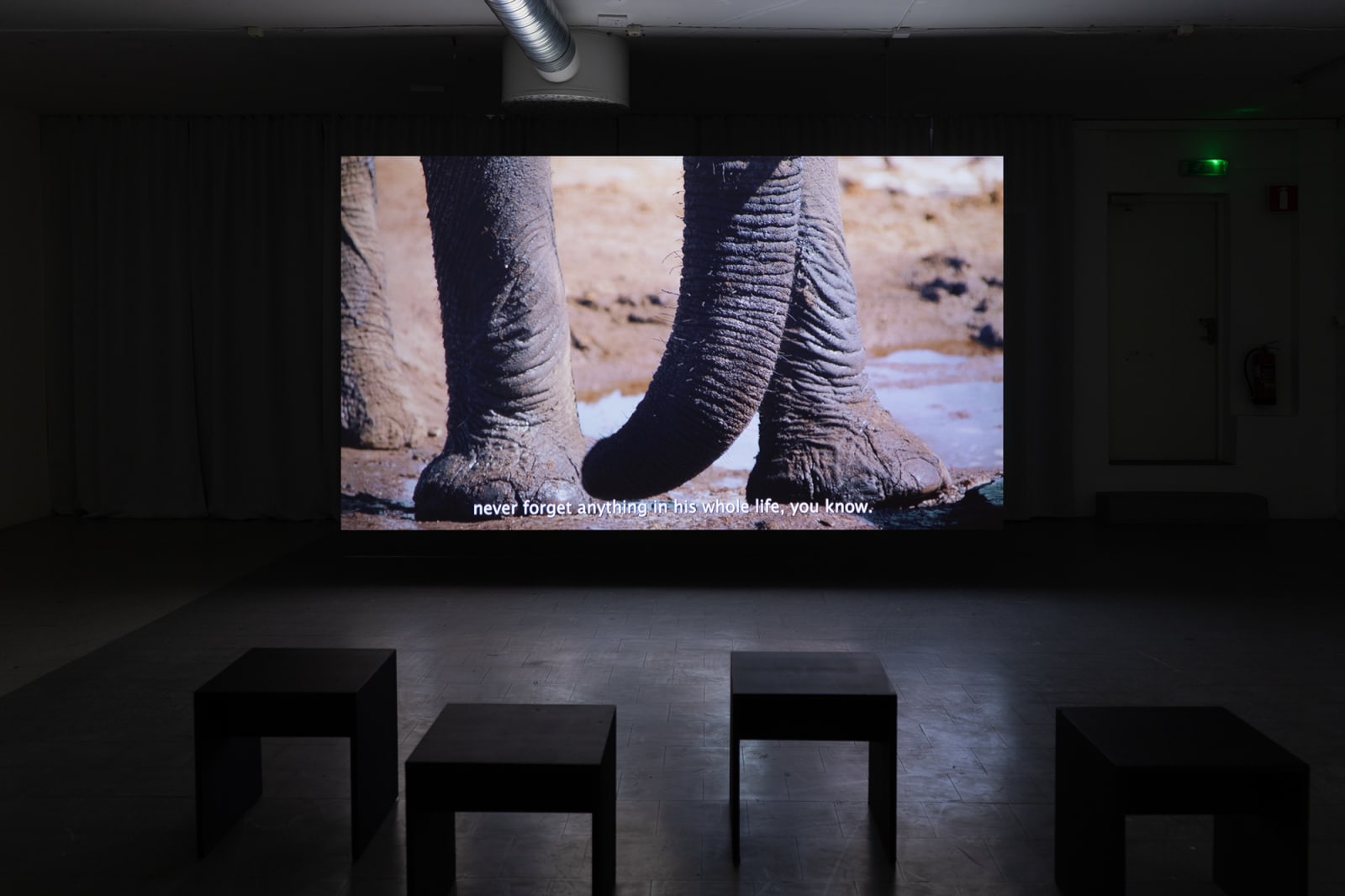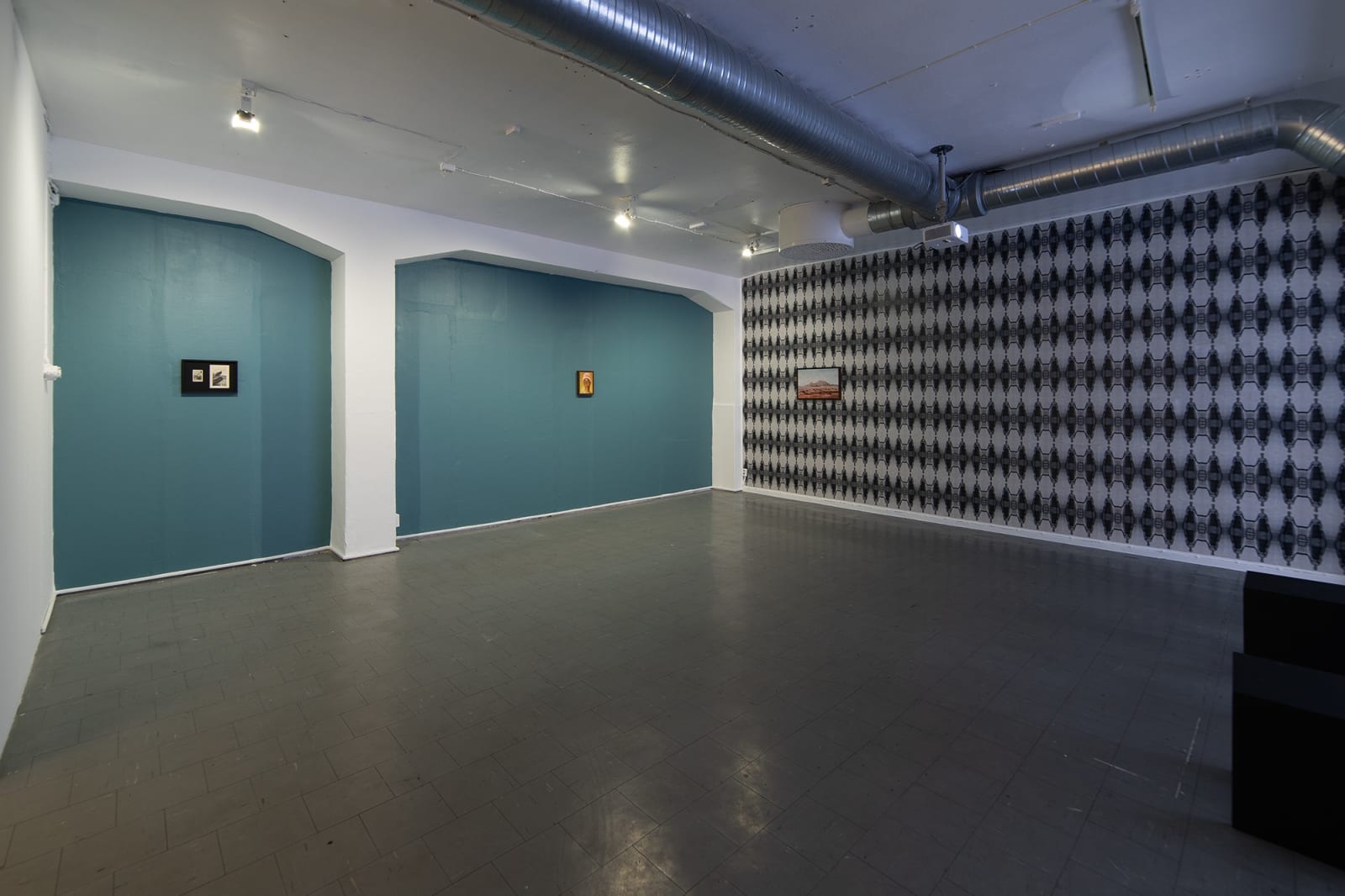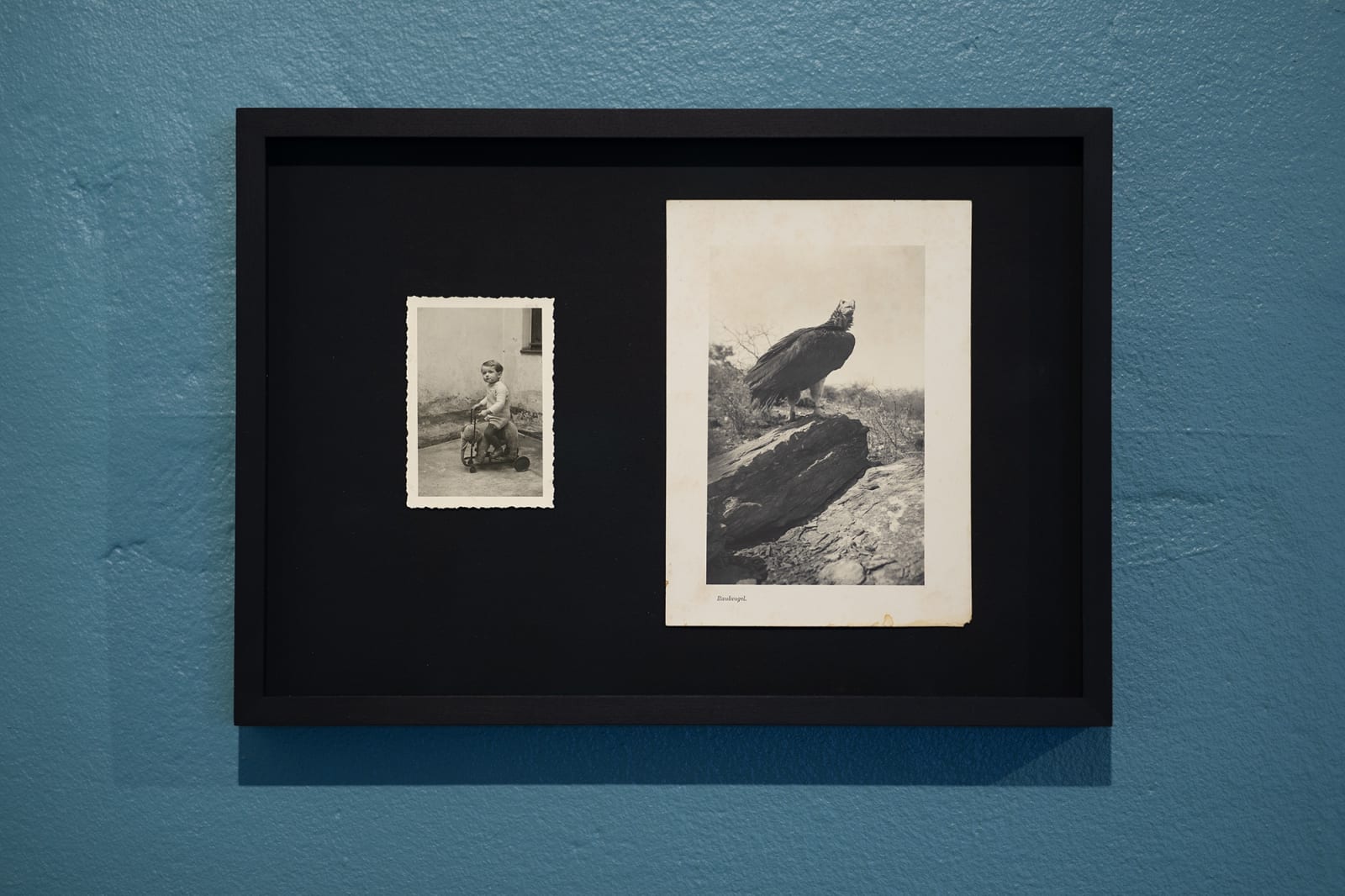Skånes konstförening proudly presents Language Against Identity, a solo exhibition by artist Santiago Mostyn. The exhibition comprises video, painting and installation, offering an immersive experience where boundaries between the immaterial and material are blurred. Mostyn uses the language of images in an attempt to understand how they carry, extend and challenge established history.
Central to the exhibition is the eponymous visual essay Language Against Identity (2024) which will be shown in Sweden for the first time. It begins with a sentence, the soft turning of a page, then silence. What soon follows are the whispers of the bush — birds chirping, the scorching breeze, and insects rustling in the savanna grass. Then, a full descent into a treacherous historical tale of exploitation, destruction, and extinction.
The video traces the effects of geographic and cultural displacement by focusing on two case studies of animals that were forcibly taken away from southern Africa and put on display in northern Europe. The first is that of Bibi, a female elephant born in Zimbabwe in the mid-1980s, who was shipped to the GDR as a baby and still lives in captivity in Germany. The second is a museum collection of African birds housed in the small town of Vänersborg. The birds were captured by a Swedish settler in South West Africa in the late 1800s, and have been on continuous display for about 120 years.
Through meticulous observation, archival research, and critical intervention, Mostyn unravels narrative strands that metaphorically reflect the turbulent relationship between Europe and Africa, as well as his personal connection to these geographies. He emphasises this through repetition, close-focus perspective, the remaking of paintings by the late Swedish painter Axel Eriksson (1878–1924), and found images that appear in gradual crescendo.
Language Against Identity contrasts the vibrant beauty of flora and fauna with the stark realities of colonialism and its dire, lasting effects.
Curator: Tawanda Appiah










